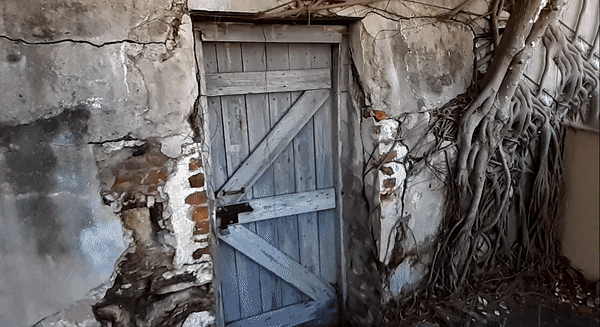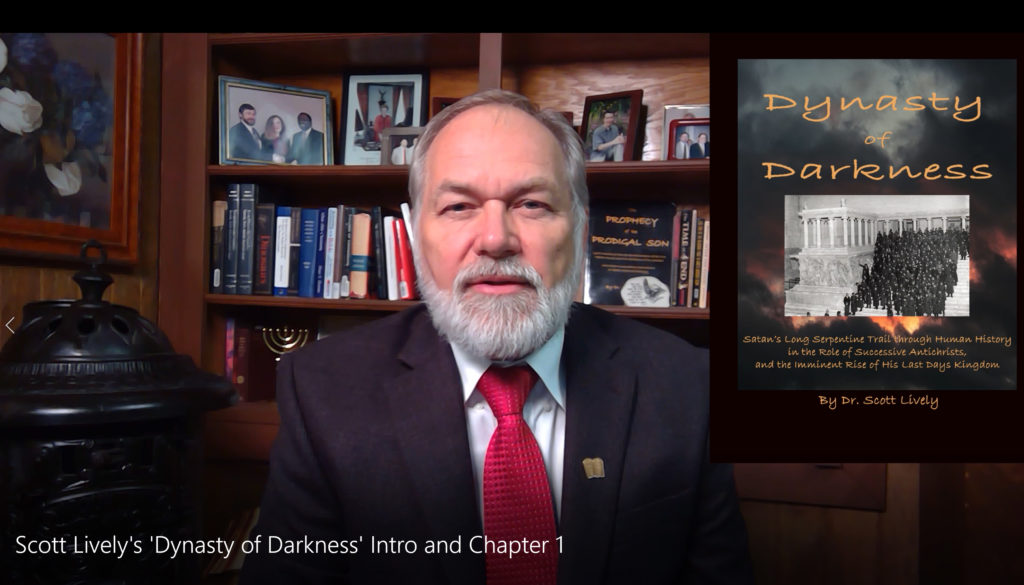
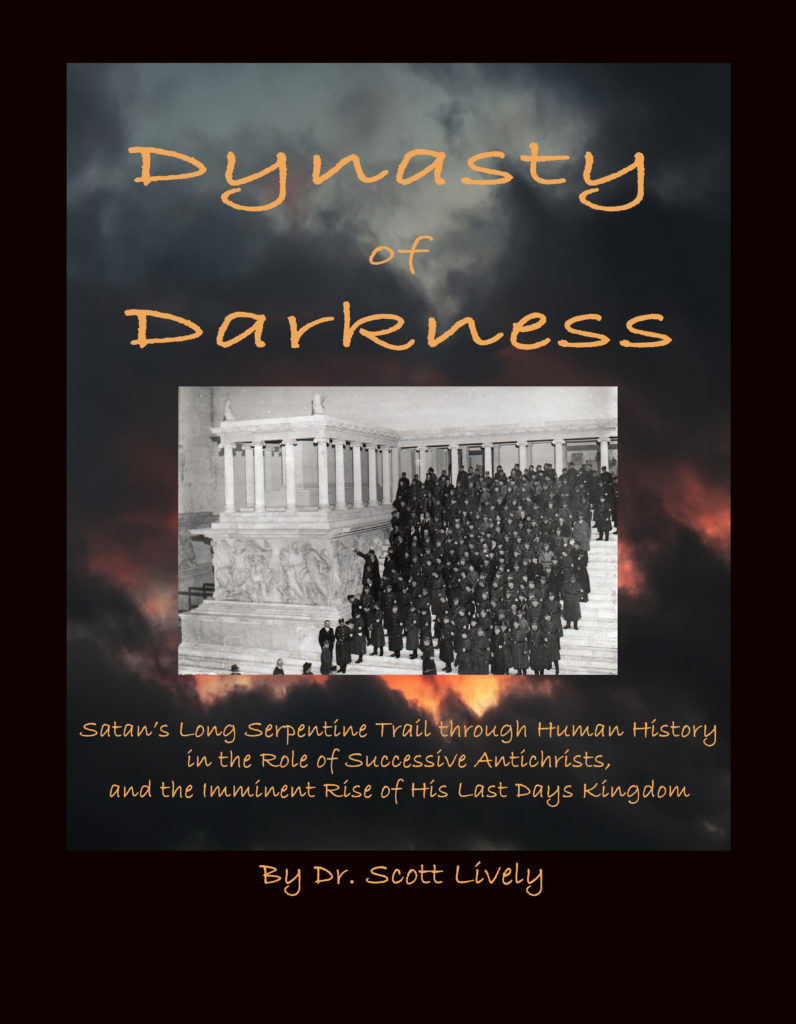
The Dynasty of Darkness
Satan’s long serpentine trail through human history in the role
of successive Antichrists, and the imminent rise of his last-days kingdom
By Dr. Scott Lively
Introduction
The study contained in this book began as a hypothesis suggested by a film titled The Rape of Europe which discussed the occult roots of the European Union. The film drew a causative connection between the presence of the Altar of Pergamum (aka the Seat of Satan) and events in Germany following its excavation and removal to Berlin. Beginning as it does by asking whether the film’s suggestions could be supported Biblically, this work is necessarily speculative, but it is not eisegetical. It holds the Bible as the authority and simply asks whether the text confirms the hypothesis. There is no attempt to force the Scripture to fit the hypothesis, and in fact the hypothesis has been altered and refined as the truth of the matter has been more clearly revealed in the scripture. Contrary to the dogma of some denominations, there is no Biblical prohibition on speculation as to the meaning of Scripture.
Readers who have been conditioned by the materialistic orientation of the modern church to view spiritual matters with skepticism may have difficulty with this study. It treats as factual or plausible many ideas that have been mocked or mythologized in American popular culture for at least two generations, but which are fully Biblical in a literal reading of scripture as it would have been understood by the Apostles and their Disciples.
Chapter One:
Where Satan Dwells
“And to the angel of the church in Pergamum write: The One who has the sharp two-edged sword says this: ‘I know where you dwell, where Satan’s throne is; and you hold fast My name, and did not deny My faith even in the days of Antipas, My witness, My faithful one, who was killed among you, where Satan dwells” (Revelation 2:12-13).


“And there was war in heaven, Michael and his angels waging war with the dragon. The dragon and his angels waged war, and they were not strong enough, and there was no longer a place found for them in heaven. And the great dragon was thrown down, the serpent of old who is called the devil and Satan, who deceives the whole world; he was thrown down to the earth, and his angels were thrown down with him” (Revelation 12:7-9).
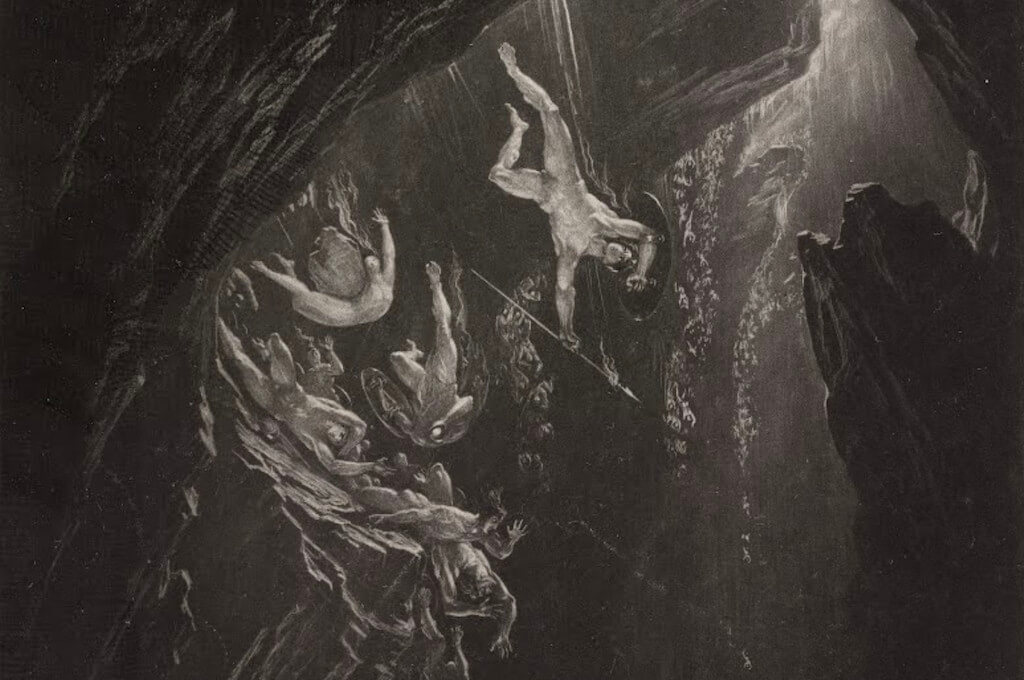
“The LORD said to Satan, ‘From where do you come?’ Then Satan answered the LORD and said, ‘From roaming about on the earth and walking around on it’ ” (Job 1:7).
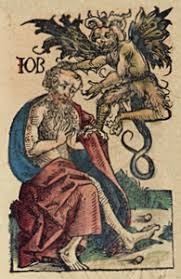
“Again, the devil took him up into an exceedingly high mountain, and showed him all the kingdoms of the world, and the glory of them; And said unto him, ‘All these things will I give you, if you will fall down and worship me.’ Then said Jesus unto him, ‘Begone, Satan: for it is written, You shall worship the Lord your God, and him only shall you serve’ ” (Matthew 4:8-10).
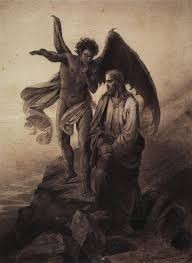
During the four-century gap between the end of the Old Testament and the beginning of the New Testament, an ancient prophecy of Daniel was partially fulfilled. The Seleucid King Antiochus IV Epiphanes, demonically possessed by Satan himself, tried to extinguish the worship of Jehovah God by the Hebrew people in Jerusalem.
His strategy was multifaceted. He corrupted the Levite priests with flattery, led the young men into moral compromise, and defiled God’s Temple with pig’s blood and other unclean things. Finally, he set up the “Abomination of Desolation” on the holy altar, foreshadowing the last days Antichrist of Revelation.
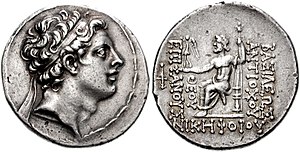

One heroic man, Judah Maccabees (Judah the Hammer), led a successful revolt against Antiochus and preserved the Hebrew religion and culture.
Roughly upon the death of Antiochus, his key political ally and mentor King Eumenes II of Pergamum built the Altar of Pergamum, which is described in Revelation Chapter 2 as “Satan’s Throne.”
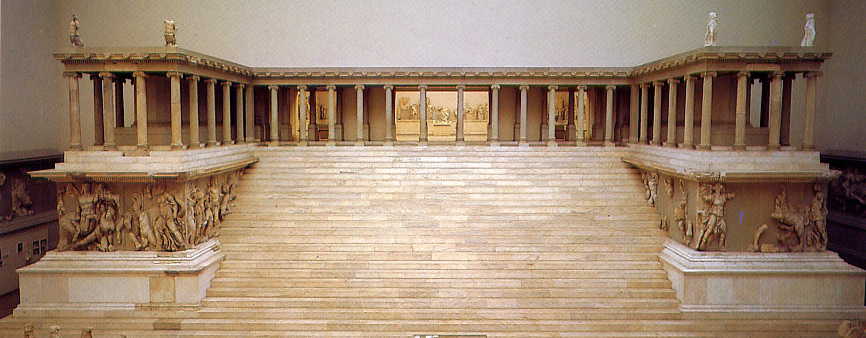
“And to the angel of the church in Pergamum write: The One who has the sharp two-edged sword says this: ‘I know where you dwell, where Satan’s throne is; and you hold fast My name, and did not deny My faith even in the days of Antipas, My witness, My faithful one, who was killed among you, where Satan dwells’ ” (Revelation 2:12-13).
Satan’s Throne sits today in the Pergamum Museum in the center of Berlin, Germany after it was excavated and restored in the late 1800s. It became the property of the Germans shortly before German philosopher Friedrich Nietzsche began preaching the satanic mantra “God is Dead.”

It’s acquisition was considered by Kaiser Wilhelm II to be the highest achievement of his rule — a regency which included (by some accounts) his surreptitious launch of World War I to divert public attention from a long series of criminal scandals at home. It was the inspiration for the design of Adolf Hitler’s Nuremberg Rally Complex, the ultimate expression in architecture of his satanic megalomania that gave us World War II and the Holocaust. (And, incidentally, it was the inspiration for the design of the stage on which candidate Barack Obama accepted the Democratic nomination for President of the United States in 2008.)
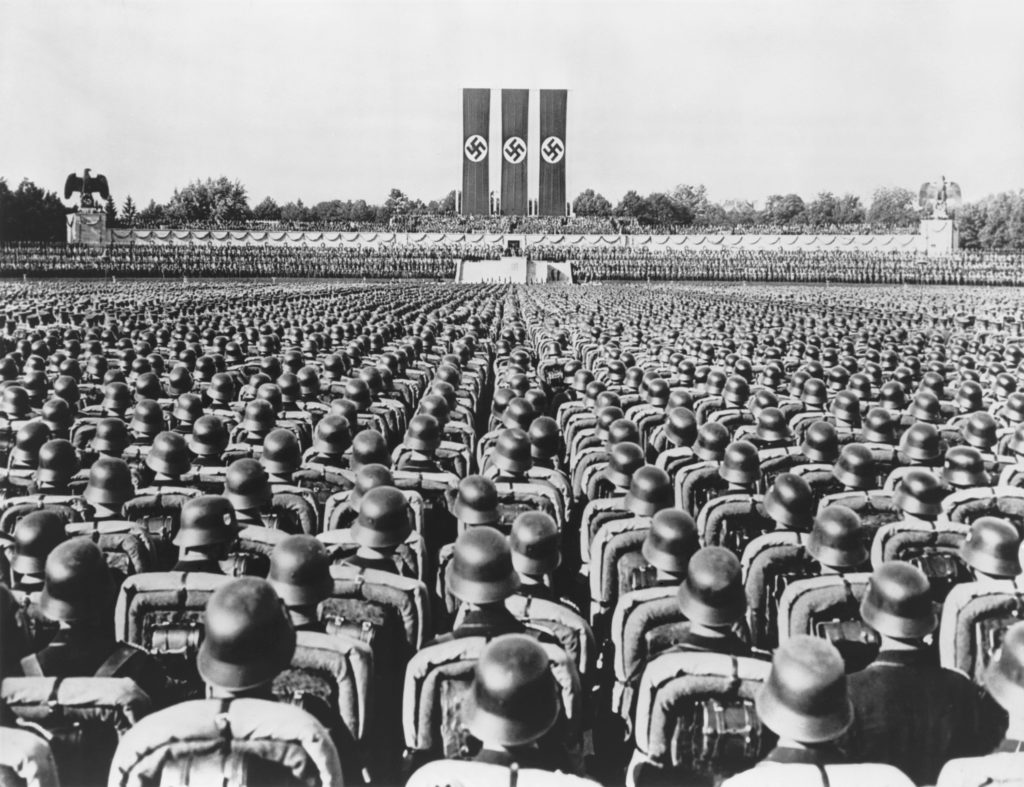

Satan’s Throne was owned by the Romans during the reign of its most grossly evil emperors, the Arabs during the rise of Islam, the Germans during Third Reich, the United States during the official displacement of Christianity by Secular Humanism, the Soviet Union during its decades as the “Evil Empire,” and the European Union from its inception to the present day.
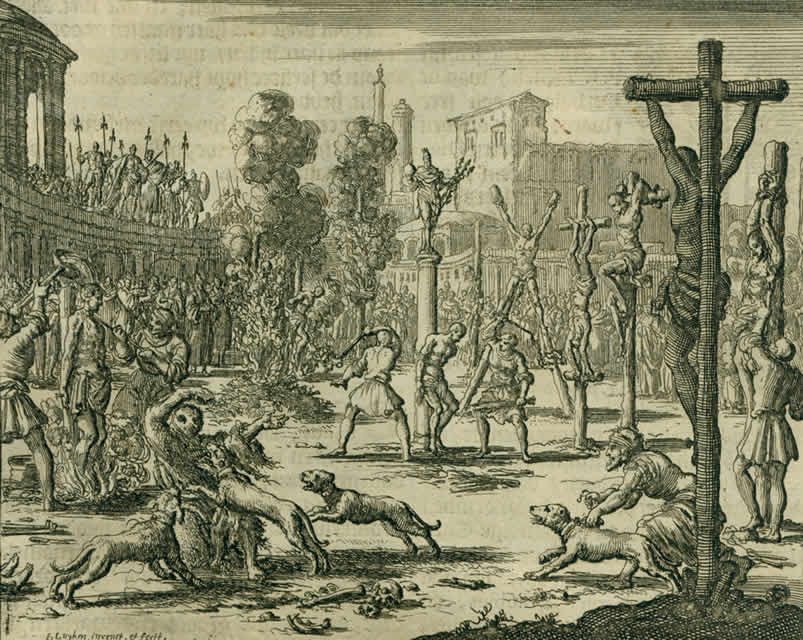
Satan’s Throne?
Is the Biblical reference to the Altar of Pergamum as Satan’s Throne merely metaphorical, or is it literal? Did Satan actually dwell in Pergamum, or more specifically in or upon the Altar of Pergamum? Was the Altar his spiritual gateway into the material world? And if so, has it served that purpose thorough the ages, even to this very day? Is the Altar his exclusive dwelling place or have there been others?
This study posits that the center of evil in the world at any given moment in time is where Satan dwells and that this evil is manifested throughout history in the actions of a series of human rulers (or other men strategically situated to serve his interests) who fulfill the role of “Antichrist” under his direct influence — an influence which is somehow tied to their possession of or authority over Satan’s material dwelling place. Using these assumptions we will attempt to trace the history of Satan in the world.
The list of Antichrist figures presented in this first publication is incomplete, as this will be an ongoing study, but we believe enough of the chronology is provided to confirm the hypothesis on which it is based.
Before we begin to identify the individual persons who appear to fulfill the “office” of the Antichrist through the centuries we must address a few of our presuppositions and caveats.
First, that Satan is a finite, created being with limitations defined by God (Ezekiel 28:15).
Though he has great power, and an army of demonic angels at his command, he can only
be in one place at a time.
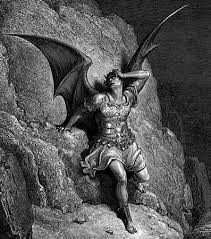
Second, while Satan is the king of the demonic realm and the most wicked of all creatures, he is not the only evil entity at work in the world (Revelation 12:7-9). There are many “principalities and powers” working to deceive, degrade and enslave human beings (2 Corinthians 10:3-6). The existence of more than one wicked ruler in the same time period is not an argument against one of them being the Antichrist.
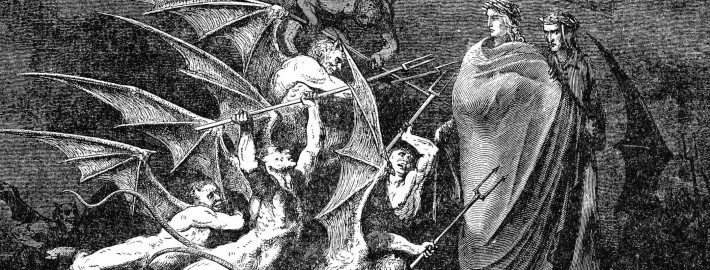
Third, while the holy angels who serve God have the power to take human form and walk unnoticed among men (Hebrews 13:2), demons, including Satan, seem to have more limited access to the physical world and must “possess” living hosts, both human and animal (Matthew 8:28-32).
Fourth, at least some demons are based in specific geographic territories. This does not seem to be true of angels. While Michael the Archangel is identified in Daniel 12:1 as “the great prince who stands guard over the sons of your people” (by implication wherever they may be) the actual “prince of Israel” (the land) is a demon who will rule until the return of the Messiah (Ezekiel 21:25).
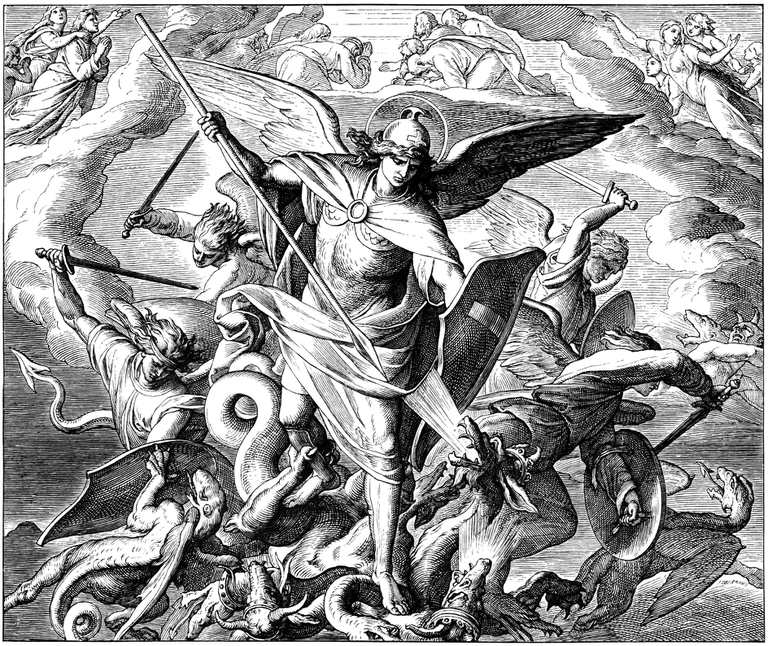
The Bible also speaks of the “Prince of Persia” (Daniel 10:13) and of specific towns and cities named after the Baal or “lord” that presides there: for example Baal Peor, named for a demon called Chemosh, worshipped by the Moabites (Num. 25:3-5), and “Baal-zebub [the Lord of the Flies], the god of Ekron” (2 Kings 1:16).
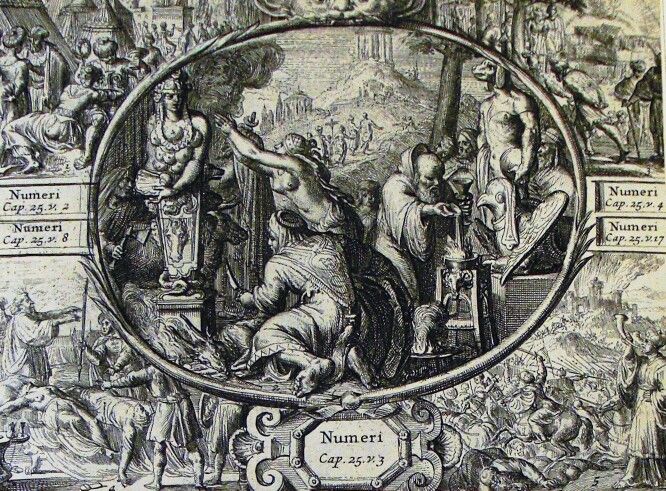
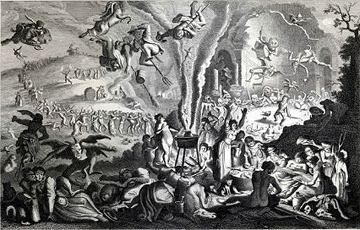
So, from the time of the expulsion from the Garden of Eden until the brief period in which he is allowed greater freedom by God to lead the last days rebellion (Revelation 13), it would seem that Satan’s influence in the world is limited to what he can accomplish through a human host.
Since we suppose that Satan was somehow tied to the Altar of Pergamum as his dwelling place, we will also ask where, if anywhere, did Satan dwell before the Altar was built for him. We will address several possible sites/structures in this study, including the very City of Babylon, whose name in the original Akkadian language means “Gate of God,” and which housed the Temple of Marduk (aka Bel or Baal).
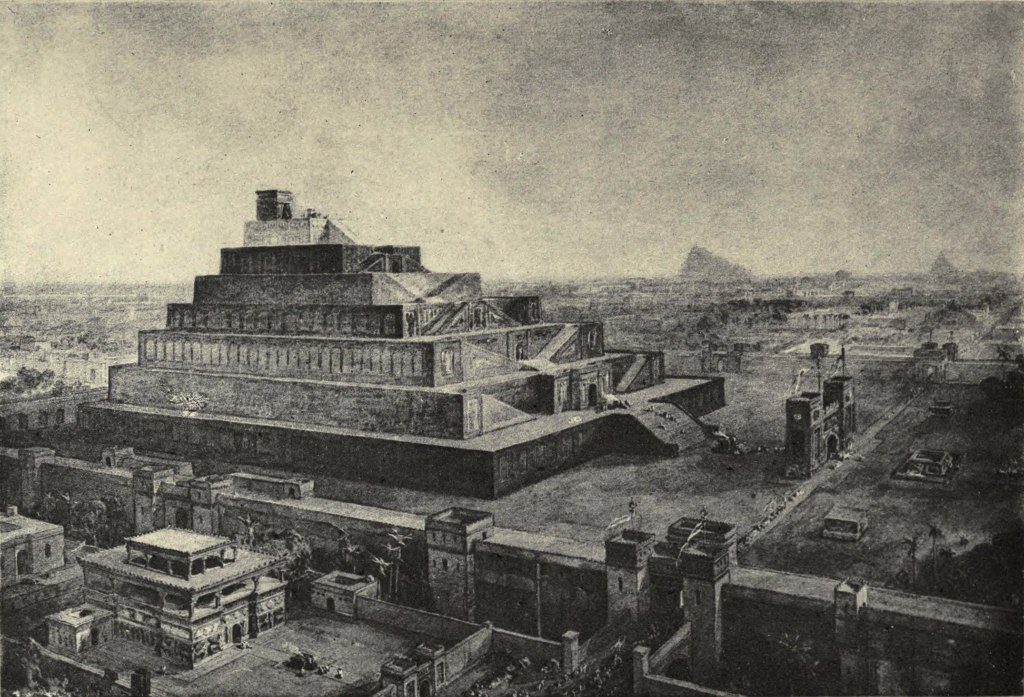
Spiritual Portals
There is a theme interwoven throughout scripture of the phenomenon of specially constructed altars or other structures which serve as portals from the spiritual to the physical world.
The most important of these was, of course, the Tabernacle of God, within which is the Holy of Holies, which held the Ark of the Covenant, whose top is called The Mercy Seat. The Tabernacle had two separate altars, one for burning incense and the other for animal sacrifice. Each of these was specially constructed according to His detailed instructions (Exodus 25-31; 36-40). God’s presence was intimately associated with the Tabernacle in the form of a pillar of smoke by day and of fire by night (Exodus 40:34-38). The Tabernacle was the model for the Temple of God which was constructed much later.
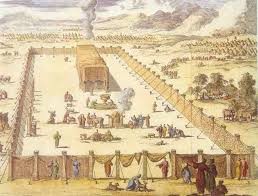
God also instructed His people to make altars of un-hewn stone (Exodus 20:25). Long before the time of the Exodus, Abraham built such altars to God (Genesis 12:7, 8; 13:18) and the practice continued throughout the Old Testament.
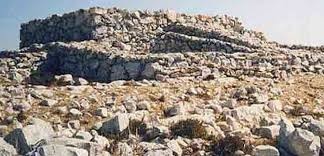
Importantly, the Lord was not in any way limited in His access to the world, but these structures and the regulations related to them somehow facilitated His interaction with His people, and served as a protection to human beings who attempted to draw near to Him. Without them, the very Holiness of His presence would destroy them (Exodus 19:21-22; 20:19; Leviticus 10:1; 2 Samuel 6:7).
In a similar but far more restricted manner, those who worship demons access the spiritual world through physical altars and other structures. There are numerous examples in scripture but perhaps the most significant involves King Ahab of Israel who built both an altar and a temple to Baal in Samaria, the capital city of the Northern Kingdom of Israel.
Ahab, of course had married Jezebel, the daughter of King Ethbaal of Zidonia (1 Kings 16:31-33). Importantly, Ashtoreth, female counterpart to Baal was “the goddess of the Zidonians” (1 Kings 11:5). Thus the marriage of Ahab and Jezebel appears in this context to be the literal union of Baal and Ashtoreth (Satan and his bride, as it were), the man Ahab being possessed by the demon Satan and the woman Jezebel by the demon called Ashtoreth.
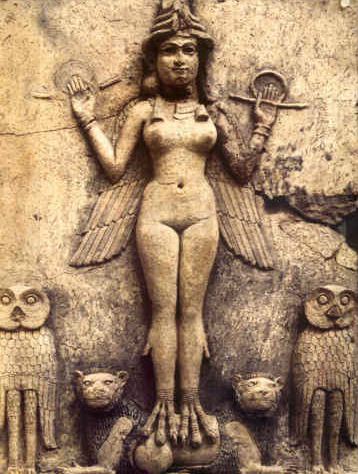
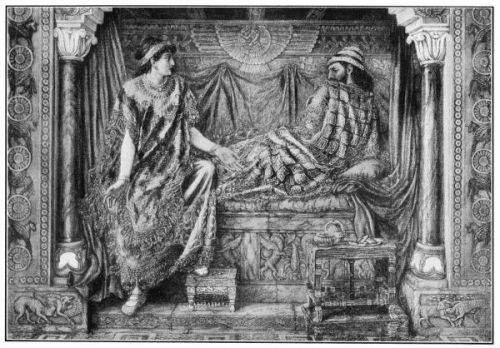
Ahab was considered by God the most wicked of all the kings of the House of Israel (though King Manasseh of the House of Judah may have surpassed him in wickedness — 2 Kings 21:1-16). In contrast, King Josiah of Judah was considered the most righteous of the Hebrew monarchs of either house. 2 Kings 23 and 2 Chronicles 34 offer extensive details of Josiah’s reforms, which emphasized the destruction of pagan altars and other sites and structures used to worship demons throughout Jerusalem and the surrounding hills as well as in the Temple of God. An enlightening glimpse at the spiritual defilement of the Temple is provided in Ezekiel’s vision in the Book of Ezekiel, Chapter 8.
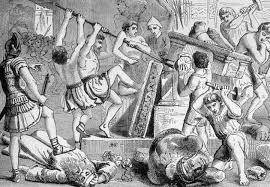
We will examine the Antichrist role of various Judean and Israelite Kings more extensively later in this book. Our purpose here is simply to identify a few demonic spiritual portals to demonstrate that there is extensive Biblical support to the idea that demons can operate in the world in association with physical objects and structures.
Let us proceed then with our study of Antichrists through the ages.
End Chapter One



